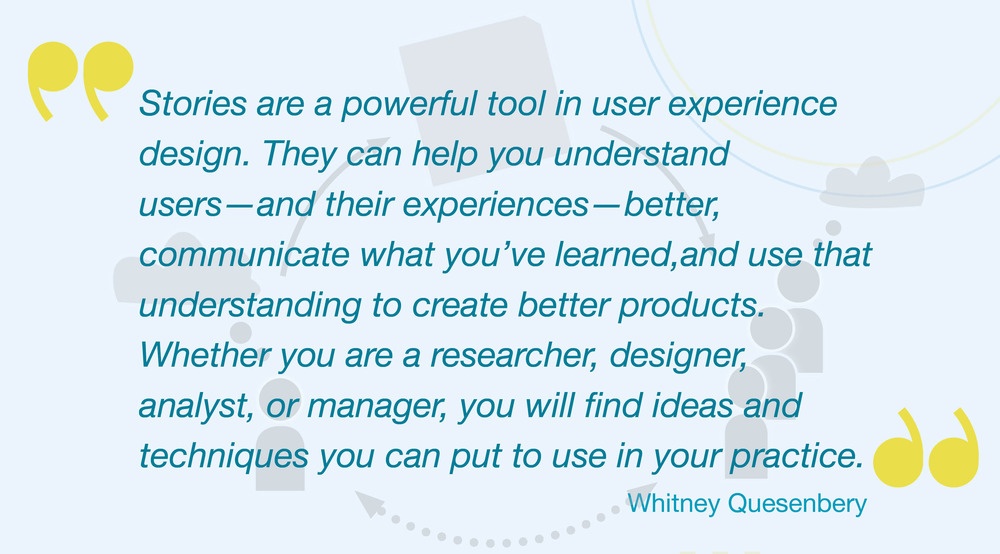
Whitney Quesenbery is one of the pioneers of usability and storytelling. She has worked with organizations like the National Cancer Institute. She was the president of the Usability Professionals’ Association (UXPA) and has a background in theatre.
Recently I read Storytelling for User Experience: Crafting Stories for Better Design, a book she co-authored with Kevin Brooks. As a researcher and a designer, storytelling has been part of my life for a long time. However, I found her book to be a comprehensive source of inspiration about how a compelling story can establish a common ground of communication among all the stakeholders.
Two weeks ago, I was fortunate to meet Whitney at a storytelling lecture at Bentley University. It was a pleasure to meet the person who inspired me to use stories in my work in the first place. The lecture was open-ended. She talked about the main components of a good story in User Experience Design. She described different roles of storytelling, from creating a shared understanding when explaining research, to engaging imagination and sparking new ideas.
As a great storyteller, Whitney brought her conversations to life by sharing fascinating narratives from her experience and engaging us to exchange our thoughts and personal approach within interactive group activities. Below is the summary of our conversations and my thoughts with referencing quotes from Whitney.
“When you get in the habit of really listening, you may be surprised to discover how many stories you will hear.”
As researchers, our first job is to be empathetic listeners. But, sometimes it is difficult to decide on the contributing factors of an appealing story. Looking for strong details and actions, such as complicated day-to-day responsibilities of a manager on a site visit, is grouped by these factors. Captivating stories also can be derived from contradicting facts and details that illuminate unrecognized user data.
“Good stories have time, place, events, characters, but they also have emotions, imagery, motivation, and context.”
Persona is my foundation when I want to translate research insights to stories. But, many other factors should be considered in crafting a story that sometimes may be forgotten in a day-to-day busy style of working. Rich emotional aspects, resonating motivation, and contextualizing persona are valuable strategies that can give soul to a story and empower it to resonate with the audience.
“Live with your story.”
In the last part of the workshop, Whitney stimulated a research project by introducing a thought experiment contextualized by public transport. We structured our scenarios by generating: name, role, demographics, goals, usability needs, and a background story for the personas. Then, the groups presented their scenarios to the larger group. My team’s persona was a daily and familiar user. She is a professional female who works in downtown Boston. In our scenario, a 30 second delay caused her to miss her bus and important client meeting!
An engaging narrative is a frequently used strategy at Essential, which enables us to effectively convey our insights with different stakeholders. It allows us to creatively connect to users and gain their trust and inspire our clients to start practical actions.
Special thank you to the Bentley, UX group for the opportunity!


